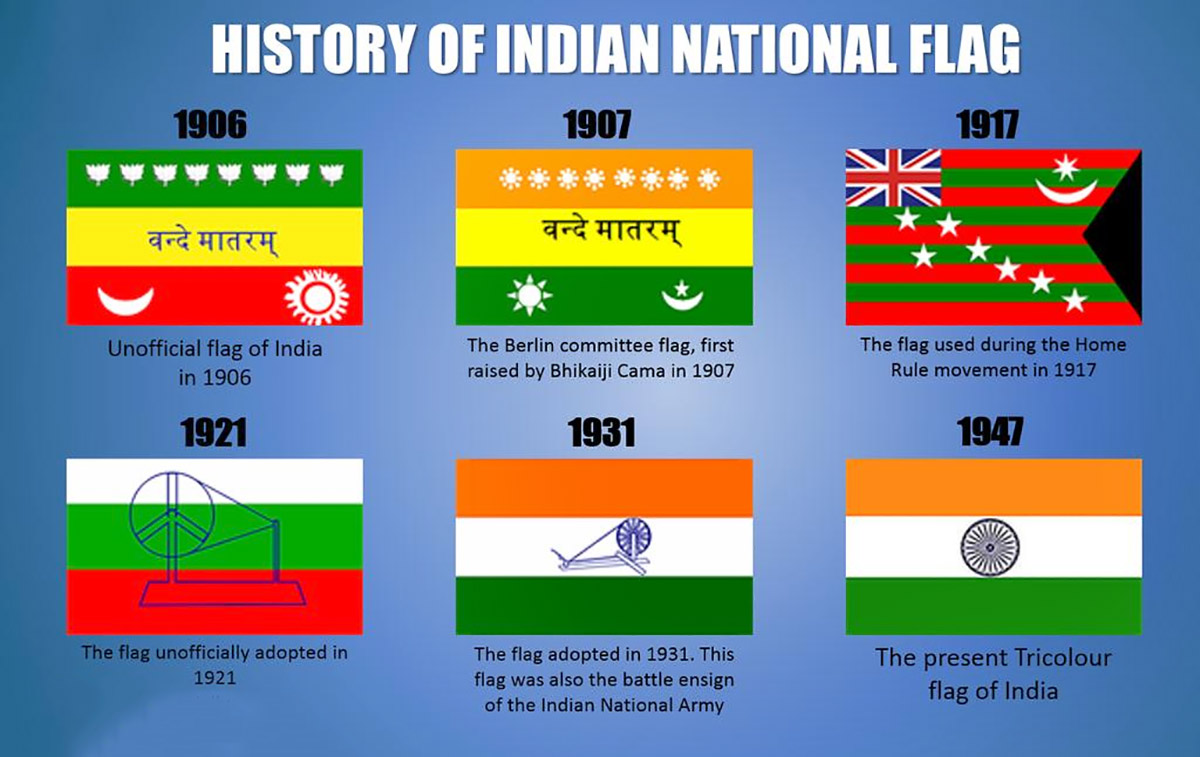Important Facts For Prelims
National Flag Day
- 22 Jul 2024
- 5 min read
Why in News?
India's National Flag Day commemorates the adoption of the Indian national flag on 22nd July 1947, by the Constituent Assembly, a few days before the country attained Independence from the British on 15th August 1947.
What is National Flag Day?
- About:
-
On 22nd July 1947, the Constituent Assembly of India, chaired by Dr. Rajendra Prasad, adopted the National Flag.
-
The National Flag symbolises national pride, unity, and the struggle for freedom, and is a tribute to the sacrifices of freedom fighters.
-
-
Resolution and Significance:
-
Pandit Jawaharlal Nehru moved the Resolution, stating, "Resolved that the National Flag of India shall be horizontal tricolour of deep Saffron (Kesari), white and dark green in equal proportion.
-
In the centre of the white band, there shall be a Wheel in navy blue to represent the Charkha. The design of the Wheel shall be that of the Wheel (Chakra) which appears on the abacus of the Sarnath Lion Capital of Asoka.
-
The diameter of the Wheel shall approximate to the width of the white band. The ratio of the width to the length of the Flag shall ordinarily be 2:3.
-
-
The assembly unanimously adopted the motion, marking the end of British rule and affirming India's commitment to freedom and future prosperity.
-
What are the Major Laws Governing the National Flag?
- About:
- The hoisting/use/display of the Indian National Flag is governed by the Prevention of Insults to National Honour Act, 1971 and the Flag Code of India, 2002.
- Flag Code of India, 2002:
-
Provisions:
- Whenever the National Flag is displayed, it should occupy the position of honour and should be distinctly placed.
- A damaged or dishevelled Flag shall not be displayed and shall be destroyed as a whole privately.
- The two sanctioned methods to dispose of the Tricolour are either burying or burning. Dignity should always be maintained while disposing of the national flag.
- The Flag should not be flown from a single masthead simultaneously with any other flag or flags.
- The Flag should not be flown on any vehicle except of the dignitaries mentioned in Section IX of Part Ill of the Flag Code, such as President, Vice-President, Prime-Minister, Governors etc.
- No other flag or bunting should be placed higher than or above or side by side with the National Flag.
- A member of the public, a private organisation or an educational institution may hoist/display the National Flag on all days and occasions, ceremonial or otherwise, consistent with the dignity and honour of the National Flag.
- Recent Amendments:
- The Flag Code of India, 2002 was amended in 2021 allowing polyester or machine made Flag and again in 2022 allowing flag to be flown day and night.
- The National Flag shall be rectangular in shape. The Flag can be of any size but the ratio of the length to the height (width) of the Flag shall be 3:2.
-
- The Prevention of Insults To National Honour Act, 1971:
- Anyone who, in a public place or visible to the public, disrespects or brings into contempt the Indian National Flag or the Constitution of India through burning, mutilating, defacing, disfiguring, destroying, trampling, or any other act (including spoken or written words), will be punished with up to three years of imprisonment, a fine, or both.
Read more: National Flag of India
UPSC Civil Services Examination, Previous Year Question (PYQ)
Prelims:
Q. Who among the following is associated with ‘Songs from Prison’, a translation of ancient Indian religious lyrics in English? (2021)
(a) Bal Gangadhar Tilak
(b) Jawaharlal Nehru
(c) Mohandas Karamchand Gandhi
(d) Sarojini Naidu
Ans: (c)
Q. What is the number of spokes in the Dharmachakra in the National Flag of India? (2008)
(a) 16
(b) 18
(c) 22
(d) 24
Ans: (d)





